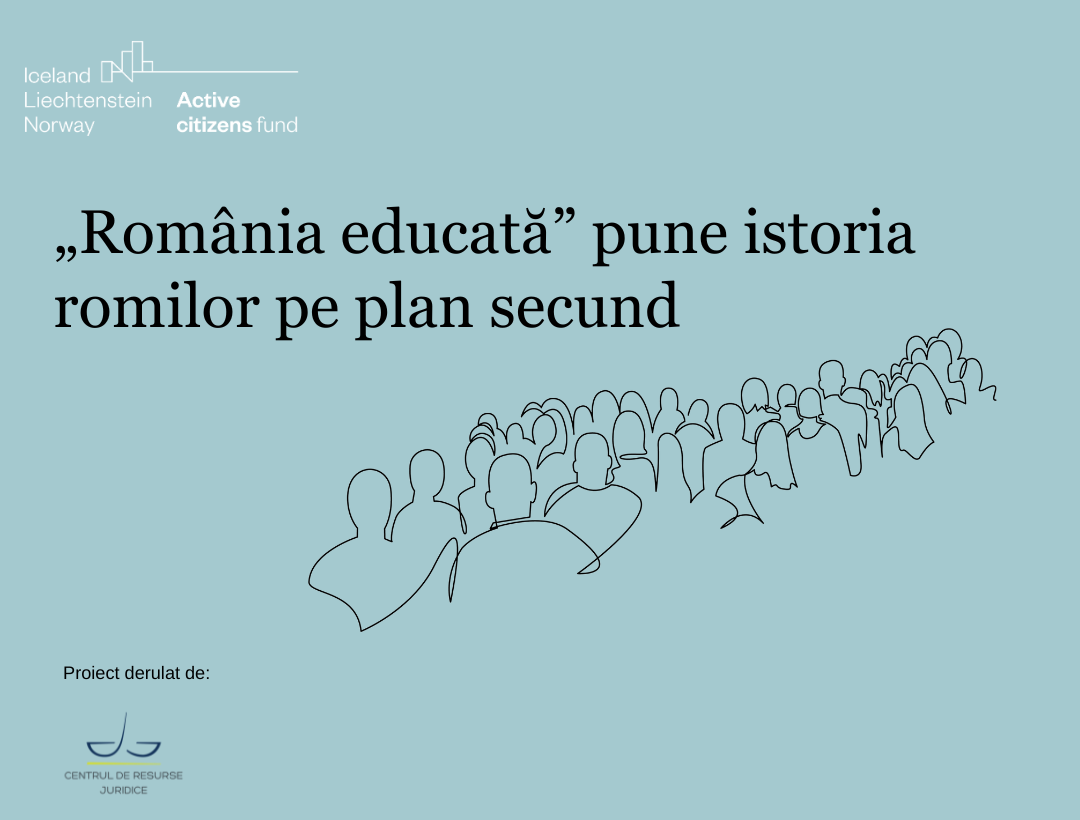On July 4th, the education laws were promulgated. According to the Law on pre-university education, art. 88, “History, Slavery and Deportation of the Romanis” is introduced as an optional modular school subject in the national offer of optional subjects of secondary and high school education, as well as “History of the Jews. Holocaust” and “History of Communism in Romania”, as school subjects, part of the common core curriculum (i.e. compulsory) in the secondary education framework plans.
We welcome the inclusion of these disciplines, the study of the respective historical periods being absolutely necessary to understand the past, but especially the present of the Romanian state, in relation to human rights and their respect.
But we cannot but note with deep concern that the history of the Romanis, the Romani Slavery in the Romanian Countries, the Romani Holocaust are included in an optional subject, so they may or may not be studied by students throughout their school career.
We remind you that only from 2020 we have Romanian history textbooks, for the 8th grade, which necessarily include two case studies about the Romani slavery and the Holocaust, and the information about slavery is presented in a distorted and discriminatory way (see www.dor.ro/istoria-romilor-este-predata-distorsionat-si-rasist/). Previous 8th grade textbooks presented serious problems: in the textbook published by Teora, the Romani community was only mentioned in a list of minorities in interwar Romania, as “g****s”. The other textbook, by Sigma, included a short fragment on the history of the Romani people in the Principalities, a brief reference, without historical information or sources, to the Romani slavery (when and how it started, when it was abolished, the context). Also the high school textbooks, still in use, have serious deviations. For example, in the 12th grade textbook, published in 2007 by Gimnasium Publishing House, in the section Modern Romania. Majority and minorities, pupils are given some important coordinates: the emergence of the Romanies in the Romanian Lands, the “enslavement” of the Romanies, then the acts of desubjugation in Moldova and Wallachia. But the wording distorts slavery, attributing the blame to the Romanies:
„Since their settlement here, the Romanies have been considered, due to their backward standard of living and physical appearance, a lower-class population. That’s why, from the beginning, they have been marginalized and isolated”.
We are in 2023, in a country that refuses to know its history, to talk about it, about the consequences in the present, about reparations, and that only checks that it respects all its citizens equally and fairly. While equal and uncut rights? While a quality education, inclusive and non-discriminatory, in which we learn about the history of the Romanies in Romania? See: www.portalinvatamant.ro/articole/legi-25/legile-educatiei-promulgate-intr-o-ceremonie-la-palatul-cotroceni-12206.html?fbclid=IwAR39Tx4nuqpy0L-GqOhk3PLdJazZqWB8iwYt9dNa5sLyK3D4W2QHIfQGj0U



